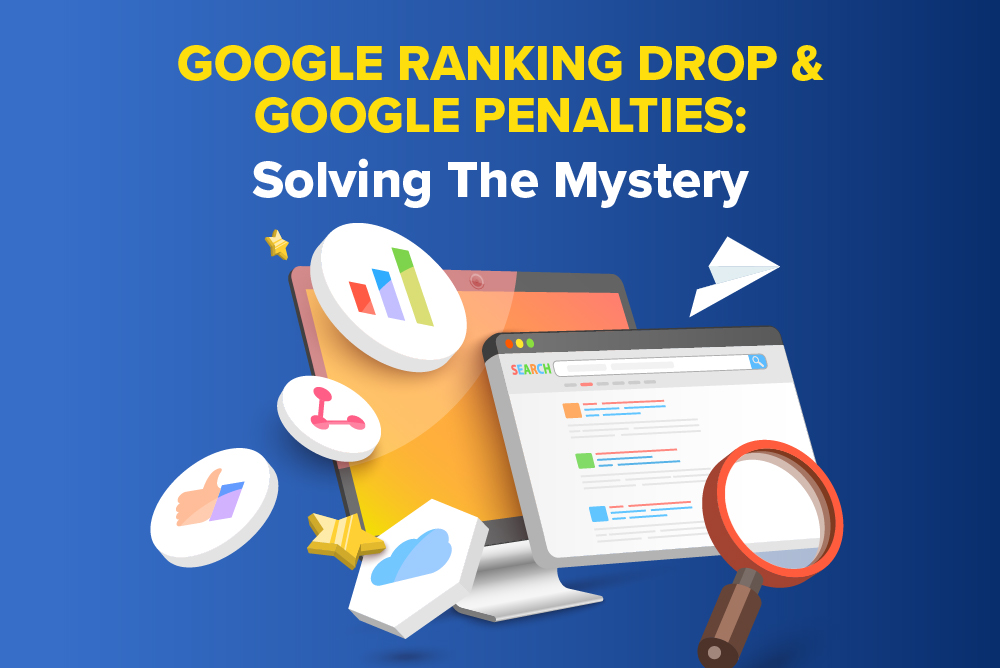At the core of a good SEO strategy is a carefully curated list of keywords. Being the core pillars which we pour SEO resources around, keywords are then naturally the first crucial step to a sound SEO strategy. But what makes a keyword correct for you? The answer here depends largely on your marketing goals, the current state of the website, and what you are promoting.
In this article, you will learn how to choose keywords for SEO through the following steps:
- Finding keywords within your niche
- Considering search volumes and long tail keywords
- Identifying the intent of keywords
- Studying the SERPs for keywords
- Selecting additional keywords to incorporate into clusters
- Determining how authoritative your website is for its niche
- Looking for trending and seasonal keywords
1. Finding Keywords Within Your Niche
Before kickstarting your SEO keyword selection, you will need to first consider what products, services, knowledge, or value you can offer. Based on what you have gathered, you probably would be able to derive some keyword ideas to begin with. Additionally, if you have verified a Google Search Console property for your website, you can find seed keywords with which Google already associates your website.
From here, SEO keyword tools such as Ahrefs, Semrush, or Google keyword planner can help you find the most popular variations of your seed keywords. Specific topics can also be uncovered via these SEO tools, which further expands the scope of your SEO efforts.
It is important to note here that you should always bear in mind the target market that you are going after through organic search. Naturally, your website has the potential to attract a wide variety of audiences, most of which you might find valuable to various degrees. However, with limited resources available, you ideally would want to prioritise effective keyword ideas that are used by your most valuable audiences in your SEO keyword selection.
2. Considering Search Volumes And Long Tail Keywords
When considering keywords for SEO, it is important to consider the search volumes of the keywords. Search volume indicates the number of times a keyword is searched for in a given period of time, typically a month’s duration. Naturally, keywords with higher search volumes are important to getting high numbers of your target audience to visit your website. Additionally, these keywords are often used by the general audience, which thus further expands your website’s reach.
Introducing Long Tail Keywords
Having said that, you should not disregard lower-volume search keywords in your SEO keyword selection. In particular, long tail keywords which refer to highly specific keywords with lower search volumes are often used by audiences in the know. For example, they might be highly familiar with your niche and are ready to make a decision on which products or services to buy. Hence, they key in terms that zoom in on their main area of concern and choose a provider from there.
While long-tail keywords may not bring in as much traffic, they might provide a ready stream of conversions on your website. As such, finding a balance between high-search volume keywords and long-tail keywords is critical to your SEO efforts.
3. Identifying The Intent Of Keywords
When it comes to SEO, understanding how to select keywords based on intent is just as important as choosing the right ones. Just like there being different types of SEO, there are various types of keywords based on intent. Intent refers to the purpose behind a keyword search and can be divided into four main categories: informational, navigational, comparison, and transactional.
Informational Keywords
Informational intent keywords are those used by people who are looking for information on a particular topic. They may not be ready to buy anything yet but are looking for more information on a particular topic.
Often, this includes how-to articles, explanation content, and scholar pages. In general, informational keywords are not prioritised by brands due to the low action intent. Yet, for websites with a strong SEO foundation, informational keywords can be selected and targeted in order to get high volumes of traffic.
Navigational Keywords
Navigational intent keywords are those used by people who already know what they want and are looking for a specific website or page to get it from. Two broad groups of terms exist within the navigational keyword group.
For starters, your brand terms used in conjunction with other terms related to a specific page on your website can be considered navigational. In essence, the user is familiar with your offerings and thus has an idea about the combination of terms needed to find a specific page on your website.
In addition, terms used to help a user find your physical store would also fall under navigational keywords. It should be noted that users may not know about your brand at this time, and may instead be performing a generic search for goods or services in their area.
Transactional Keywords
Transactional intent keywords are those used by people who are ready to buy something. They have done their research and are now ready to make a purchase. As such, these keywords are highly valuable to e-commerce SEO strategies as they have a higher chance of converting into sales.
As alluded to above, transactional keywords are often long tail in nature as such users typically search for very specific products that meet their criteria. Nonetheless, in any niche, there are a couple of high-volume transactional keywords that most brands compete for. These keywords are used by audiences who may not be particular about the product or service, yet are ready to purchase a basic version of it.
Comparison Keywords
Comparison intent keywords are those used by people who are looking to compare different products or services before making a purchase. They may be familiar with the offerings of different brands and want to make sure that they get the best deal possible. These keywords mostly incorporate terms such as “best”, “cheapest”, “top”, or “fastest”.
4. Studying The SERPs For Keywords
When it comes to how to choose the right keywords for SEO, studying the SERPs (Search Engine Results Pages) will be an important step. By studying the SERPs, you can gain valuable insights into what keywords are being used by your competitors and how they are ranking for them. This will help you identify and select the keywords that are viable to target in your brand and website structure.
The Intent Of Comparison Keywords
For instance, your brand may not be conducive to having content that matches the SERP intent for comparison keywords. After all, having content that compares various brands in your niche may not be conducive to your brand’s image. In such an instance, we recommend that you leave such comparison keywords off your target list entirely when choosing your SEO keywords.
The Intent Of Navigational Keywords
Since users of navigational keywords need help finding a specific piece of information as quickly as possible, targeting this category is all about precise content. How well set up is your contact us page? Do you have hyperlocal pages that match the area in which a user can be found? Do you have dedicated pages for product pricing or warranties? Once you have determined the various needs of users of navigational keywords, creating specific pages to match these needs should be sufficient to rank for them.
The Intent Of Transactional Keywords
Typically, audiences on search who are ready to purchase a product or service use very specific search terms. Be it a specific condition that allows them to find products that meet their needs or terms that directly land them on a chosen brand’s webpage. Naturally, transactional keywords should be of the highest priority to your SEO efforts. As such, you will need to carefully list down the specific wants of your target audience and find corresponding keywords that can be mapped to your web pages.
It is worth noting here that the results on the SERP may not reflect what a layman thinks of a search term. For example, you might think that a product name would produce a SERP filled with product web pages. Yet, it could instead return product category pages. This is certainly a pitfall for SEOs or marketers who have been doing keyword research for some time but have consequently become complacent.
The Intent Of Informational Keywords
Informational keywords often have the largest search volumes due to their non-transactional nature and audiences’ need for answers. When targeting informational keywords, it is important that your content primarily answers the needs of your audiences. As such, blogs or commentaries are often utilised for ranking informational keywords. This allows you to fully explore every aspect of the topic related to the informational keyword.
5. Selecting Additional Keywords For Clusters
Keyword clustering is a technique to group related keywords together and after which be targeted using a single page on your website. Based on your initial seed list of SEO keywords, you will be able to use keyword research tools to find similar keywords for your selection. We recommend having at least three to four keywords per cluster, giving you sufficient breadth in providing a complete solution.
Generally, when one keyword in the cluster begins to climb up the SERP rankings, the other keywords in the cluster are pulled along with it. Furthermore, a combination of newly brought-in organic search traffic alongside continuous tweaking of your web page’s SEO efforts can lead to all keywords in the cluster reaching the top.
Determining How Authoritative Your Website Is
SEO never happens in a vacuum. Instead, it is essentially a zero-sum game where competition is the only constant. At the same time, every brand or organisation has limited resources to compete. This is why it is important to consider how realistic your selection of target keywords is for ranking within a given time frame. At the heart of this the SEO competitor analysis which compares the current state of your website’s SEO to your competitors.
There are three main areas to look out for when determining whether your website can rank for a keyword in a short to medium timeframe:
- Keyword cluster rankings
- Backlink authority of your website
- Current content formats on your website
Once the competition of your list of keywords has been determined and then placed alongside your available resources, you can determine how realistic your SEO keyword targets are. This allows you to do a final filter down of your keyword list, leading to a selection of keywords that are valuable to the brand and realistic to rank in a specified duration. From there, your SMART SEO strategy can be crafted and implemented with confidence.
7. Looking For Trending And Seasonal Keywords
An extra step that you can take is to look into trending or seasonal keywords for your SEO keyword selection. These types of keywords are often missed out on when looking at keyword research tools as their search volume is deflated when averaged across 12 months. Yet, their search volumes are actually compressed into short spans of time, often accompanied by valuable actions taken by their users.
Trending Keywords
Breakout topics occur regularly without marketers ever linking them to the brand or content. Yet ever so often, an area of overlap occurs between the breakout topic and the brand’s offerings, allowing vigilant SEOs to capitalise on the corresponding high search volumes.
One tool that gives you such information for free is Google Trends. Google Trends finds you breakout topics that are related to your seed keyword. From there, it provides you with the comparative difference in interest over a chosen time period.
Seasonal Keywords
Similar to trending keywords, seasonal keywords have search volumes that increase drastically over a short period of the year before falling off. Though unlike trending keywords, seasonal keywords see such patterns repeat consistently each year. This gives SEOs ample opportunity to find the keywords ahead of time, and plan resources accordingly.
Again, Google Trends is the go-to free tool to find seasonal topics or keywords. This time, we recommend comparing search interest on a year-on-year basis. The resulting graphs provide you with a clear indication of any seasonal demand for a search topic and when it would likely occur.
The Challenge Of SEO Keyword Selection
As we have covered in this guide, proper keyword research and selection involve many rigorous steps. Yet, when done right without skipping corners, it yields the base for getting strong returns from your SEO efforts. As such, whether you have yet to begin finding keywords for your brand or are in the midst of narrowing down your target keyword list, we recommend that you seek an extra layer of checks from professional SEO services. This will ensure that all your upcoming SEO efforts yield the best return possible for your brand.
Interested to find out more about the how-to of SEO beyond choosing keywords or our personal curated list of SEO ranking signals? Discover our SEO resource hub.

















